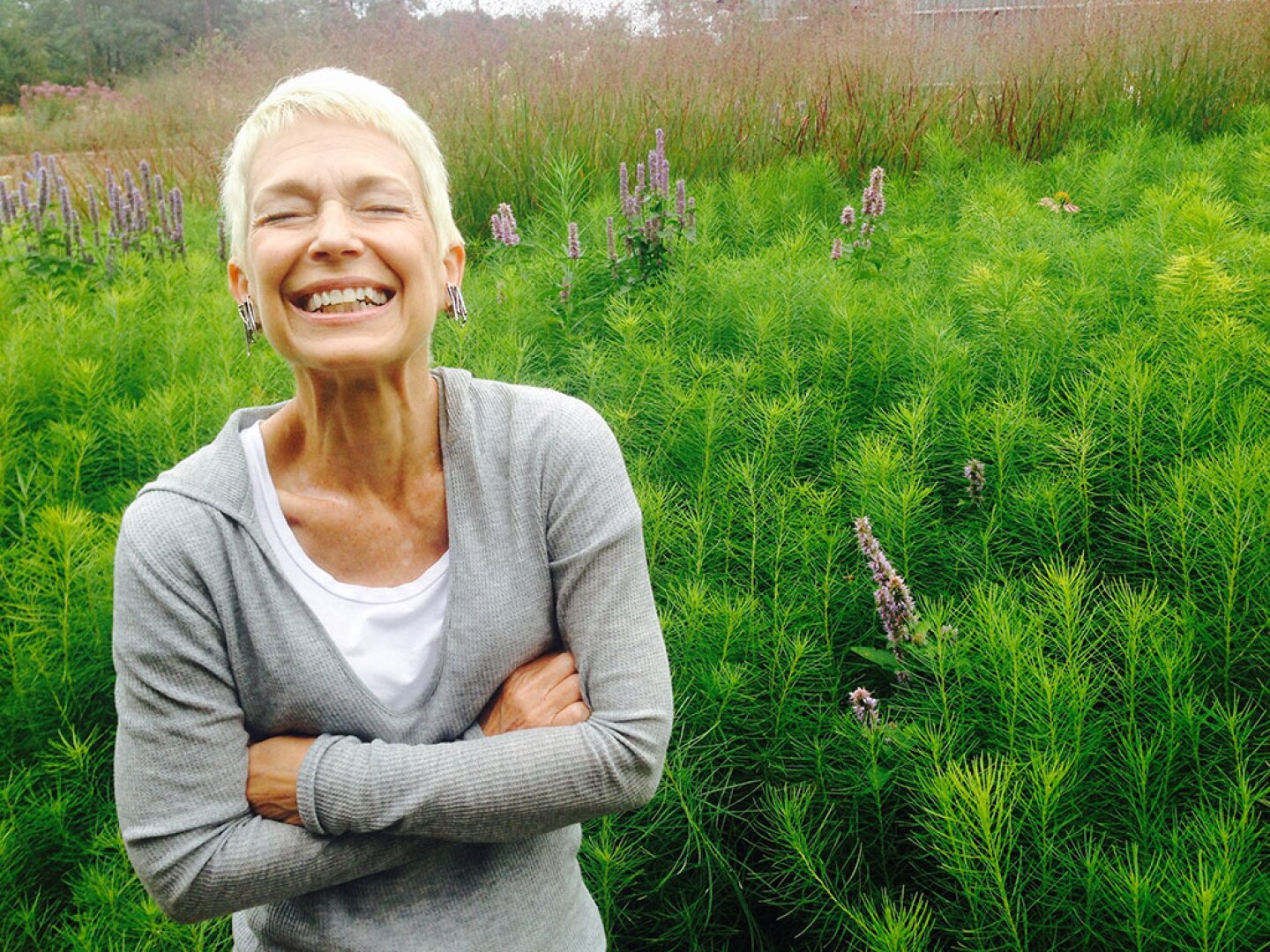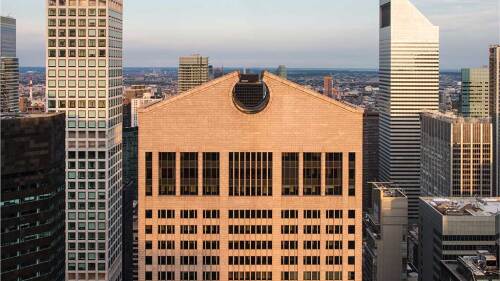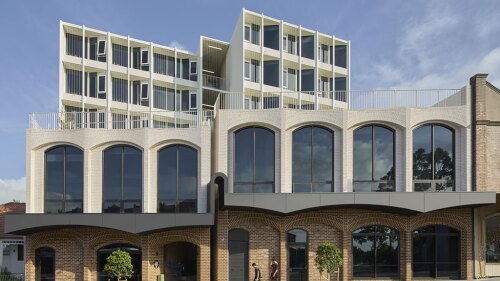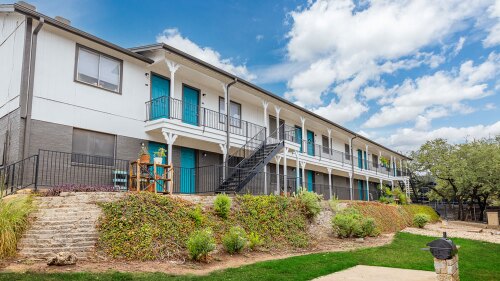Pioneer in placemaking and forward-thinking leader Carol Coletta, a revered local and national convener with an ability to connect public and private partners around a longstanding focus on inclusivity and public spaces, was selected as the 2025 recipient of the Urban Land Institute’s highest honor, the ULI Prize for Visionaries in Urban Development.

Carol Coletta, Bloomberg Public Innovation Fellow at the Bloomberg Center for Public Innovation at Johns Hopkins, has held leadership roles at the John S. and James L. Knight Foundation and The Kresge Foundation. As president and CEO of Memphis River Parks Partnership, 2017–2024, she led a $100 million fundraising effort for riverfront improvements.
(John Montgomery)
Over the decades, Coletta has elevated talented urban leaders, designers, and community members in their aspirations to reach meaningful outcomes within the public realm. As president and CEO of Memphis River Parks Partnership from 2017 to 2024, she led the organization in raising more than $100 million for riverfront improvements, including $61 million for the award-winning Tom Lee Park, a national model for inclusive public space.
Coletta, Bloomberg Public Innovation Fellow at the Bloomberg Center for Public Innovation at Johns Hopkins, has held leadership roles at the John S. and James L. Knight Foundation and The Kresge Foundation. For nearly a decade, she hosted Smart City, a nationally syndicated public radio program, where she interviewed more than 900 global leaders in urbanism, arts, and business.
Urban Land: As a visionary leader in placemaking, what key principles do you believe are essential for creating transformative public spaces that serve diverse communities?
Carol Coletta: First and foremost, you have to want it. You really have to want it, and you have to be prepared—especially now—to persist in the face of the inevitable opposition that you’re going to encounter. People just resist change. They’re suspicious of it. I had a board member once say nostalgia is the most powerful hallucinogenic, so it’s tough to do anything new, and you’re not going to accomplish it unless you’re ready to persist.
The second principle is to learn to think bigger and smaller at the same time. Tom Lee Park is a beautiful project that won lots of awards, including ULI’s, but it wasn’t big enough. We didn’t think big enough. It’s not just about the public space that we created; it’s about the context for the public space and the connections. We need to make enough space to think about different kinds of uses, including commercial uses. We’re confined to a certain geography in our fundraising ability, and we need to figure out how to work from a bigger vision and commitment in the beginning with the partners necessary to make that vision happen.
At the same time, we often miss small things. I wrote a Substack post about how people in New Orleans “talk” to the streets with their flags, plants, and signs . . . . They don’t wait for a community meeting to do that. They don’t wait for permission from city hall—they just do it. When you are part of a formal process like a community meeting, that’s engagement. Agency is when I’m actually doing the work myself to make my city and my neighborhood what I want it to be. We need to encourage more agency versus mere engagement.
A third principle is to make narrative your friend. We did that in Tom Lee. Many Memphians didn’t know the story of Tom Lee, a very modest Black man who, at great risk to his own life, saved 32 people from drowning in the Mississippi River, though he himself could not swim. He was widely celebrated, including at the White House, by President Calvin Coolidge. The whole park is centered on his story—all of our promotion, our opening, our continued work on the art, our continued work on poetry. We keep bringing that story back. When making public space, we miss opportunities to use narrative as a device for the soft infrastructure of a place.
Finally, we need to start with the intention of mixing, welcoming, and belonging. It doesn’t just happen; you need to be intentional. One of the toughest aspects is getting people across demographics to come together, particularly across income. I’m focused on that with this Bloomberg fellowship, because our neighborhoods and schools are increasingly income-segregated. We need to use public space as a place for connection—not a perfect substitute, but a means to attract people across class and demographics.
UL: You mentioned agency versus engagement. Could you elaborate?
Coletta: I am skeptical of engagement as we often see it. Some projects and developers do it well, but much . . . engagement feels performative. You spend a lot on engagement and, at the end, some people are still unhappy because, if you’re ambitious, you won’t make everyone happy, particularly before they’ve seen it. I’m not suggesting we skip engagement altogether; we should be transparent in developing designs for projects and so forth.
But let’s not kid ourselves about who’s weighing in online, or that social media is a reflection of reality. You tend to hear the extreme voices. A lot of people just have to get up every day, make breakfast, and get their kids off to school and then go to work—their lives are busy. They’re not online all the time, weighing in on these issues, but they are frequently the ones who . . . benefit the most from these projects.
How do we nudge people to do things themselves? And that can be anything from cleanup to having block parties to putting out flags to beautifying, because government can never do it all, and you just begin where you are.
UL: You served as president and CEO from 2017 to 2024, raising $100 million for improvements, including $61 million for the park, which is a national model for inclusive public space. What fundraising tools did you employ to reach your goal?
Coletta: The initial context involved a strong push back from a beloved local festival that wanted no changes made to the park. Mediating that conflict took almost six months. Studio Gang managed the design through that period, and we signed an agreement in December 2019. Covid hit in March 2020, but we kept working and released a new design in May 2020.
We facilitated conversations about the project through an outdoor information center, fielded questions online, and took people on tours. Since the construction was visible, we engaged the public with every kind of tour to demonstrate progress.
We continued to commemorate and lift up the Tom Lee story throughout. We instituted, with Mellon Foundation’s help, a poetry contest where we got young people to write spoken word poetry inspired by the Tom Lee story. The city owns the property, but the city had a design and construction committee that would sign off on everything. It was a very transparent process, but it remained controversial until [the park] opened.
UL: Were your donors predominantly large entities, or was there variation in your fundraising base?
Coletta: Our initial fundraising included a commitment of $1,000 over three years, attracting donations as small as $20 a month.
We committed upfront to making this . . . park for everybody, which resonated with many people who had never made such donations. Proof of concept was crucial. We had already transformed another park nearby, which surprised people with its beauty. This helped foster belief in our ability to manage a larger project successfully.
UL: What personal experiences drew you to inclusivity?
Coletta: I grew up in South Memphis, which was not racially integrated, but it was racially proximate. Right around the corner from my house was a little commercial district. We had a bakery, library, grocery store, dry cleaner, drug store, movie theater, and salon. Everything was in walking distance. That certainly shaped my appetite for the kind of neighborhood I want to live in today.
When I was very young, 12 or 13, I started going to Downtown Memphis on the bus on Saturday, by myself, and I met people from across the city. So people of different demography were always very present in my life. And I have this great affinity for public life. It’s public space to me. I’m not an architect, I’m not a planner, I’m not a designer, but I have this heart for public life, because I do believe it forges community in ways that nothing else does.
UL: What elements make a public space inclusive, specifically in Tom Lee Park?
Coletta: We started with the story of Tom Lee, so our narrative from the get-go was inclusive. Second, we chose a location that gave us the advantage of wealthier people and less wealthy people . . . in proximity to one another, which can be challenging.
We learned from existing parkgoers. Studio Gang did a great job of bringing in . . . students from the surrounding distressed neighborhoods through a group called Knowledge Quest, and they came and worked . . . on the design. Additionally, we conducted public opinion polls to gauge wider sentiment, moving past the loudest detractors and capturing the collective approval of Memphians who were going to use the park.
UL: How do you build partnerships between the public and private sectors for urban development?
Coletta: This is really hard, because of the political cycles and because the people who hold office are always changing. You have to stay in touch with them and their staff and realize that other people are whispering in their ears. Ultimately, out of that communication, you create relationships, and you create trusted relationships . . . . To the extent possible, I think you also really call on those “trusted intermediaries.”
UL: What lessons did you learn about the long-term maintenance and sustainability of urban public spaces?
Coletta: Sustainability begins with design and material choices. So, getting that right makes everything easier in terms of sustainability and maintenance. Second, you need a group of people, regardless of their titles, who make it their business to make people feel welcome and make sure the property looks great. Creating a culture within the community where visitors feel ownership encourages them to care for the space.
UL: What does a culture of care look like?
Coletta: No one ever establishes the culture by just pronouncing it. You model it, you normalize it, you reinforce it. Our team had shirts that said, “Hi neighbor.” “Hi neighbor” was like, “I’m acknowledging you as an equal here. You have an equal role in this space.” It’s subtle, but it’s really important. We also had a ranger who skillfully addressed undesirable behaviors—like chunking rocks in the river—by emphasizing understanding and cooperation, rather than criticism, promoting a positive environment where individuals were encouraged to make better choices while in the park without feeling judged.
UL: How has your perspective on urban development evolved, and what trends excite you?
Coletta: We need to learn to think bigger and smaller at the same time. We need to get better at identifying the problem we’re trying to solve. We’re seeing public space being reinvented, and the public life that results from great public space produces many good outcomes for people and communities— economic impact, climate resilience, mental health, equity, social connections across class distinctions, even economic mobility.
UL: How are downtowns different from suburbs in terms of public space?
Coletta: Downtowns are increasingly relying on the growth of residential development as office workers shrink. That’s great, but don’t ever let it become just another neighborhood. If you move downtown, you need to understand you’re buying into a different neighborhood proposition.
As people work from home, I think public space has taken on an increased importance in their lives.
One challenge right now is to figure out where downtowns fit in that equation, and how to make the transition away from expecting everybody necessarily to show up in the office every day. And how can you make business thrive on people being in a place three days a week? That’s a rhetorical question. One answer is that, unless you force people to come back to the office five days a week, the only way you get people to return is that they want to be there. That means office space that’s a joy to come to, in a neighborhood that is a joy to come to with colleagues you want to be with.
UL: For young urban leaders and designers, what advice would you offer?
Coletta: Start wherever you are. Start. You have agency. Use it. Don’t wait to be invited to the table. Create your own table. I followed a passion for cities and public life, and I’ve taken every opportunity that came along.
UL: As a senior fellow at the Kresge Foundation, you led an initiative to connect civic assets for shared prosperity. How did that develop?
Coletta: The initiative, which today is still thriving, is a collaboration among foundations, cities, and nonprofits focused on maximizing the value of civic assets, such as parks, trails, and cultural
facilities. The project aimed for measurable outcomes on civic engagement, socioeconomic mixing, environmental sustainability and value creation.
Building collaboration across public and private sectors can be tough, yet reimagining resources to produce greater collective value is paramount.
UL: You led the startup of ArtPlace America.
Coletta: This public/private collaboration was extraordinary because it united major funding entities to accelerate creative placemaking. The initiative engaged mayors, reinforcing the link between the arts and urban transformation, and it focused on the outcomes for communities rather than the success of the art itself.
UL: How do you view community engagement in public space development?
Coletta: We need to stop asking people what they want and talk to them about their lives. We should ask them what gives them joy, what makes them crazy. We need to understand their lived experience. We then need to deploy methods such as statistically valid public opinion polls that get past the gatekeepers, the spokespeople, the stakeholder groups, and get to people as individuals.










